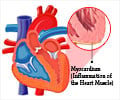High blood pressure (hypertension) and too much bad cholesterol (LDL) can put young adults at a higher risk of developing heart disease in later life, reveals a new study.
- Having high blood pressure (hypertension) and too much bad cholesterol (LDL) in early life may affect your future heart health//
- Maintaining optimal levels of blood pressure and LDL cholesterol throughout young adulthood can reduce the risk of developing heart diseases such as coronary heart disease (CHD), heart failure and stroke in later life
Read More..
Blood pressure (BP) and cholesterol are major modifiable risk factors for heart disease. While previous studies have found young adult exposures to be associated with heart disease later in life, it is unclear if this contributes to later risk independently of exposures experienced later in life. This knowledge has been restricted due to the limited age range of previous studies.
Details of the Study
Using data from six large, community-based, prospective cohort studies, researchers modeled complete risk factor trajectories starting at age 18 through follow-up and used those trajectories to estimate the independent associations of risk factor exposures during young adulthood (age 18-39 years) and later adulthood (age 40 years) with subsequent risk of coronary heart disease, heart failure and stroke.
The research team calculated period-specific time-weighted averages of systolic blood pressure (SBP), diastolic blood pressure (DBP), and high-density lipoprotein (HDL) and low-density lipoprotein (LDL) cholesterol exposure levels for younger and older adults.
Findings of the Study
High SBP and DBP in young adulthood were independently associated with a 37 percent and 21 percent increased risk of heart failure, respectively. While no young adult exposures were independently associated with stroke, increased levels of high later life SBP or DBP were strong predictors of stroke.
"Our results add to accumulating evidence that young adulthood is a critical period when high blood pressure or cholesterol are particularly harmful. Maintaining optimal levels of blood pressure and LDL cholesterol throughout young adulthood could yield substantial lifetime cardiovascular disease prevention benefits," said Andrew E. Moran, MD, MPH, associate professor at Columbia University and senior author of the study.
"However, young adults are difficult to reach by way of traditional, clinic-based preventive programs--they are transitioning between pediatric and adult-centered models of care, they often lack health insurance or experience frequent gaps in insurance coverage. Young adult utilization of ambulatory medical care and adherence to preventive health guidelines are the lowest of any age group."
The research team recommends implementation of preventive programs targeting individual young adults that are web-based, patient-centered, mobile and account for the fact that this age group may discount the importance of their future heart disease risk.
Limitations of the Study
A limitation of this study is that it relied on imputed risk factor levels before age 40 years. Future studies are needed to validate these findings in cohorts with a follow-up spanning from young adulthood to later in life.
In an editorial comment accompanying this study, Samuel S. Gidding, MD, and Jennifer Robinson, MD, MPH, said that this study should be a wake-up call for the medical community to recognize the preventive care gaps experienced by younger adults.
"The time has come to recognize that preventive interventions are occurring too late in life to have a substantial impact on the population burden of atherosclerotic cardiovascular disease (ASCVD) and heart failure," they said.
"Interventions in those with established ASCVD, advanced subclinical atherosclerosis, impaired myocardial function, diabetes or renal insufficiency are disease treatment studies and not true prevention. By moving to trials in younger higher risk individuals who have less advanced disease more amenable to reversal and developing precision medicine strategies based on genetics, imaging, and other risk factors, the next era of cardiovascular disease prevention can begin."
Source-Eurekalert
















